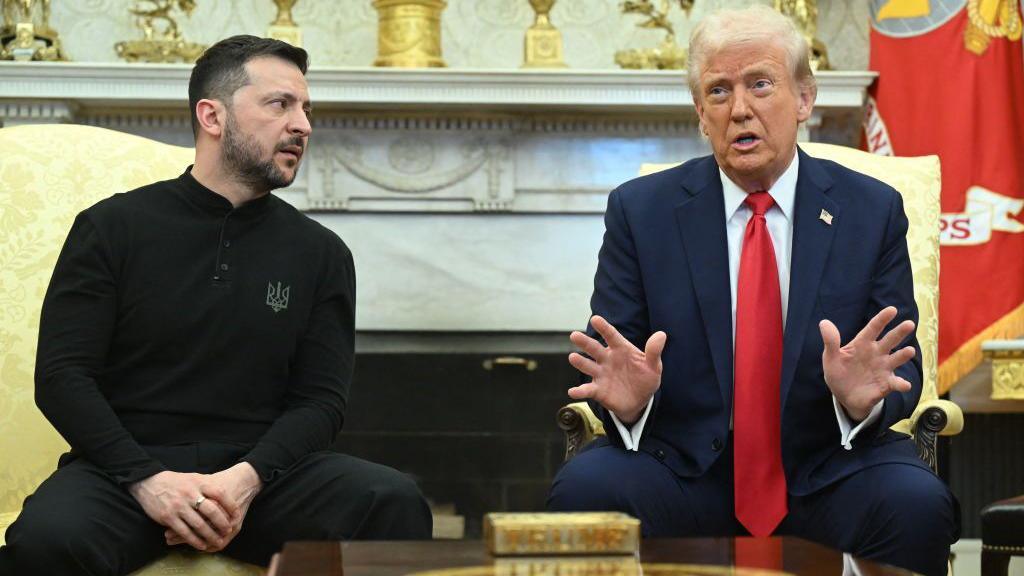The Alaska summit concluded without a definitive agreement, a scenario widely anticipated and perhaps even preferred in the absence of Ukrainian President Volodymyr Zelensky.
However, US President Donald Trump’s shift away from prioritizing an immediate ceasefire, a stance he previously expressed, is likely to cause significant concern in Kyiv and across Europe.
Russia has consistently maintained that a ceasefire can only be achieved within the framework of a comprehensive settlement that addresses Russia’s interests, inevitably implying a degree of Ukrainian capitulation.
This is the position that Trump appears to have, once again, endorsed.
“It was determined by all that the best way to end the horrific war between Russia and Ukraine,” he stated on Truth Social, “is to go directly to a peace agreement.”
He further noted that ceasefires “often times do not hold up”.
This stance seemingly contradicts Ukraine’s primary demand, supported by its European allies, that an unconditional ceasefire must be the initial step.
Critically, it also grants Russia’s Vladimir Putin valuable time on the battlefield, where he believes his forces are gaining an advantage.
“If Putin’s military objective was to avoid immediate constraints on Russian operations in Ukraine then he appears to have succeeded,” observes Matthew Savill, director of military sciences at the Royal United Services Institute.
During their brief public appearance, Putin cautioned Ukraine and European nations against disrupting the unspecified progress he and Trump had purportedly made.
However, Kyiv and its allies may perceive Trump’s actions as precisely that, potentially undermining the progress of the preceding week’s intense diplomatic efforts aimed at influencing the Alaska outcome.
This serves as a reminder of Trump’s tendency to reflect the views of his most recent interlocutor.
European leaders likely awaited the outcome with bated breath, uncertain whether their efforts had been fruitful or disregarded.
As promised, Trump contacted Zelensky, and the two leaders engaged in an hour-long conversation before being joined by European counterparts.
Zelensky described the call as “long and substantive” and confirmed his planned visit to Washington on Monday, his first since the February meeting in the Oval Office.
Much has transpired since then, with European allies working diligently to repair the relationship and advise Zelensky on navigating interactions with the White House.
“I am grateful for the invitation,” Zelensky stated, emphasizing the importance of America’s influence on the situation.
However, in a subsequent post following Trump’s statement on Truth Social, Zelensky adopted a more urgent tone.
“Killings must stop as soon as possible,” he declared. “The fire must cease both on the battlefield and in the sky, as well as against our port infrastructure.”
European diplomats are resuming their efforts to engage with Trump, emphasizing the importance of Ukrainian involvement in discussions about its future while also expressing appreciation for Trump’s engagement.
“President Trump’s efforts have brought us closer than ever before to ending Russia’s illegal war in Ukraine,” remarked Sir Keir Starmer, the UK’s prime minister.
Starmer welcomed the “openness” of the US, along with Europe, to provide “robust security guarantees” for Ukraine in the event of a deal.
The precise nature of these guarantees will require further clarification as the situation evolves.
Despite Europe’s growing role as Ukraine’s primary backer, the US remains crucial for ensuring Ukraine’s long-term security.
Italian leader Giorgia Meloni suggested that guarantees for Ukraine could be “inspired by Nato’s Article 5,” the principle of collective defense among Nato members.
Reports suggest that the possibility of guarantees outside Nato but equivalent to Article 5 was discussed during the call between Trump and European leaders.
However, Trump’s apparent shift in stance has likely caused considerable concern in European capitals.
In London, the government is attempting to maintain a positive outlook.
“If you can get that all done [a ceasefire and a peace agreement] in one go or in quick succession that’s obviously a good thing,” said a senior Downing Street source.
“But we all want to see the fighting stop.”
Trump’s departure from the immediate ceasefire proposal was likely influenced by Putin’s controversial claims about past ceasefire failures.
The Alaska meeting may be viewed as a win for Putin, providing him with a return to the international stage and some of the elements of a state visit.
The threat of increased US sanctions on Moscow also appears to have diminished, with Trump suggesting he may not need to consider the matter for several weeks.
This raises questions about the messages Zelensky will receive both in Washington and when he potentially meets with Putin and Trump.
Fox’s Sean Hannity asked Trump what advice he had for the Ukrainian leader.
“Make a deal,” Trump replied bluntly. “Russia’s a very big power and they’re not.”
In the absence of a deal, Ukrainians focused on the optics of Putin’s visit to Trump in Alaska.
Sir Keir Starmer commends President Trump’s efforts in Alaska on Friday, saying it brings “us closer than ever before” to ending the war.
The US president said a peace agreement would be better than a “mere” ceasefire, hours after summit with Putin that produced little.
With no ceasefire and an invitation to Moscow, the US and Russia’s meeting yields more questions than answers.
After the leaders left without taking questions, Anthony Zurcher and Steve Rosenberg stayed on to unpack what we learned.

